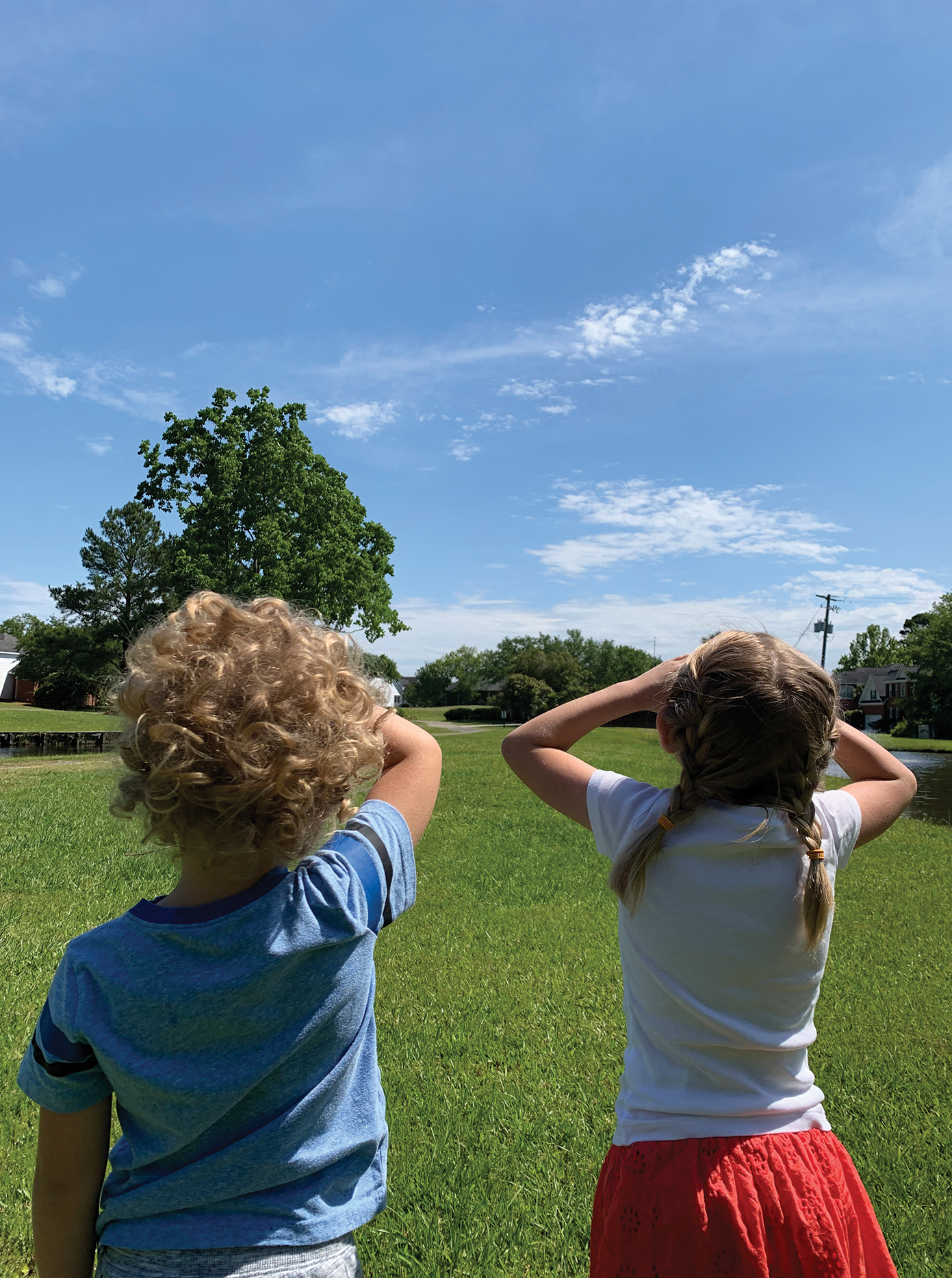Early Years
Support for At-Home Learning
Science and Children—July/August 2020 (Volume 57, Issue 9)
By Peggy Ashbrook
Science education is about “doing” as well as about “knowing.” To learn about phenomena in the natural and human built worlds, children need to have multiple, varied experiences. Science is also about “argument”—saying what you think and having opportunities and time to think and talk about it with others. Using the Next Generation Science Standards (NGSS) science and engineering practices in conversations and discussions may confirm our ideas as well as help us revise them. When sharing online resources with colleagues and families, we can think about how to incorporate all these parts of science education so learning for all children extends beyond paper or screen engagement.
Planning for all the educators, families, and children we hope to engage with the written word, videos, or online chats means we open our minds to the opportunities and constraints in their lives. Members of the Council of State Science Supervisors (see Internet Resource) offer guidance in their documents for “Supporting students’ science learning during COVID-19 school closures”—guidance that is appropriate at any time. These documents include: For Families: How can families support student science learning at home For Students: How can you continue science learning at home Sample Learning Menu— with options for low or no technology at-home learning activities Layout Version of Additional Resources from STEM Teaching Tools.
In the Layout Version, “Features of Supportive Resources” describes what families should look for or create for STEM learning experiences at any time (p. 8). A few of those recommendations include: Support flexible scheduling and limited technology access. Engage students in meaningful science explorations, investigations, and/or sense-making. Encourage students to engage in activities that already happen in their homes with materials that families already have (especially so families do not need to purchase additional supplies). Support students in self-reflection related to content and process to support their science learning. Encourage, support, and facilitate first-language family participation in the learning.
A helpful table describes what learning experiences should look like in more detail: “Learning experiences should look less like… emphasizing memorizing science content or ‘checking off’ tasks on lists,” and “should look more like…connecting science phenomena and problems to household activities, like cooking, fixing things, or gardening.”
In another helpful resource, SAGE2YC educators/researchers urge adults to explicitly tell children “this is what a scientist does” to help them see themselves as scientists. Use the guidance from SAGE2YC to help your children (and yourself) further develop “science identities.” Deepening your science identity will help children develop theirs as you talk aloud about how you “do” science. Having time with an adult who listens, supporting questioning, develops everyone’s science identity.
Developing a Science Identity
Objectives
To help children develop their “science identity”
- Choose to explore something relatively new to you and your children—something you have not yet touched, eaten, or looked at closely. It can be anything—a rock, produce from the grocery store, something in the sky, or a process such as bees moving from flower to flower. As you explore with children, use self-talk to say what you are doing and thinking (“I’m wondering if those clouds I see will still be there tonight.” “This drawing will help me remember exactly what they look like now, covering only a little of the sky. Scientists record their observations.”) Invite children to do the same.
- Observe and record observations of your object/phenomenon with available technology: magnifiers (hand lenses or digital screens), drawings, photography, or writing. Write about what you notice and think about, and include questions. Children can dictate their thinking and questions.
- Repeat observations a second time, asking open-ended questions so children can construct explanations for their ideas. “What do the clouds look like now? What do you think might have changed them?”
- Review the NGSS science and engineering practices to note which ones were used in the exploration (not all the practices will be used in every exploration). “We asked questions and used math to say how big the clouds were. We are thinking about why they changed. Scientists use these same practices. Let’s learn more about clouds by reading about scientists’ work online (see Internet Resources).”
- Offer additional experiences related to children’s questions to continue building their science identities.

Materials
- Time to observe natural phenomena
- Online resources for early childhood STEM activities (see Internet Resources)
- writing materials
- camera (optional)
- magnifier (optional)
Peggy Ashbrook (scienceissimple@yahoo.com) is the author of Science Learning in the Early Years: Activities in PreK–2 and teaches preschool science in Alexandria, Virginia.
Internet Resources
Introduction to Clouds
https://www.weather.gov/jetstream/clouds_intro
Science and Engineering Practices
https://ngss.nsta.org/PracticesFull.aspx
Science at Home
http://foundationsofscienceliteracy.edc.org/science-home/
Inquiry STEM Early Childhood Preschool


